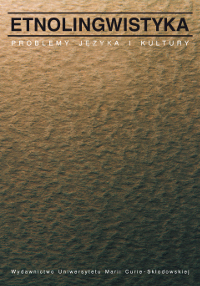Синонимия цветовых прилагательных в прозе Ивана Бунина и Александра Куприна
THE SYNONYMY OF COLOUR ADJECTIVES IN THE PROSE OF IVAN BUNIN AND ALEXANDER KUPRIN
Author(s): Aleksandr DobroerSubject(s): Language studies, Language and Literature Studies, Applied Linguistics, Philology
Published by: Wydawnictwo Naukowe Uniwersytetu Marii Curie-Sklodowskiej
Keywords: colour adjectives; synonymy; Ivan Bunin’s prose; Alexander Krupin’s prose; colours in the Linguistic Worldview
Summary/Abstract: In Russian and other European languages the inventory of colour terms is not particularly rich, therefore a writer sensitive to colour must often ”invent” new colour terms. The aim of the article is to describe the synonymy of adjectives and functionally convergent constructions used to refer to colours in the prose of Ivan Bunin and Alexander Kuprin. The writings of both authors are represented in the analysis by portions of equal size. Altogether, colour terms are used 686 times: 401 times by Bunin and 285 by Kuprin. Both writers employ a rich palette of colours, although each of the two does it in a unique way. Bunin, for example, uses terms like mokro-zelenyi ‘wet-green’, belo-kudryavyi ‘white- hairy’ or ‘white-leafy’, as well as internally contradictory terms like belo-siniy ‘white-navy blue’ or krasno-chernyi ‘red-black’. Kuprin utilizes colour elements to achieve a specific atmosphere, much in the vein of French impressionists. Bunin, in turn, behaves more like a postimpressionist in using colour to evoke a specific worldview. The ”map” at the end of the article shows the network of relationships between colour terms in the respective worldviews of both writers.
Journal: Etnolingwistyka. Problemy Języka I Kultury
- Issue Year: 12/2000
- Issue No: 12
- Page Range: 205-220
- Page Count: 16
- Language: Russian

